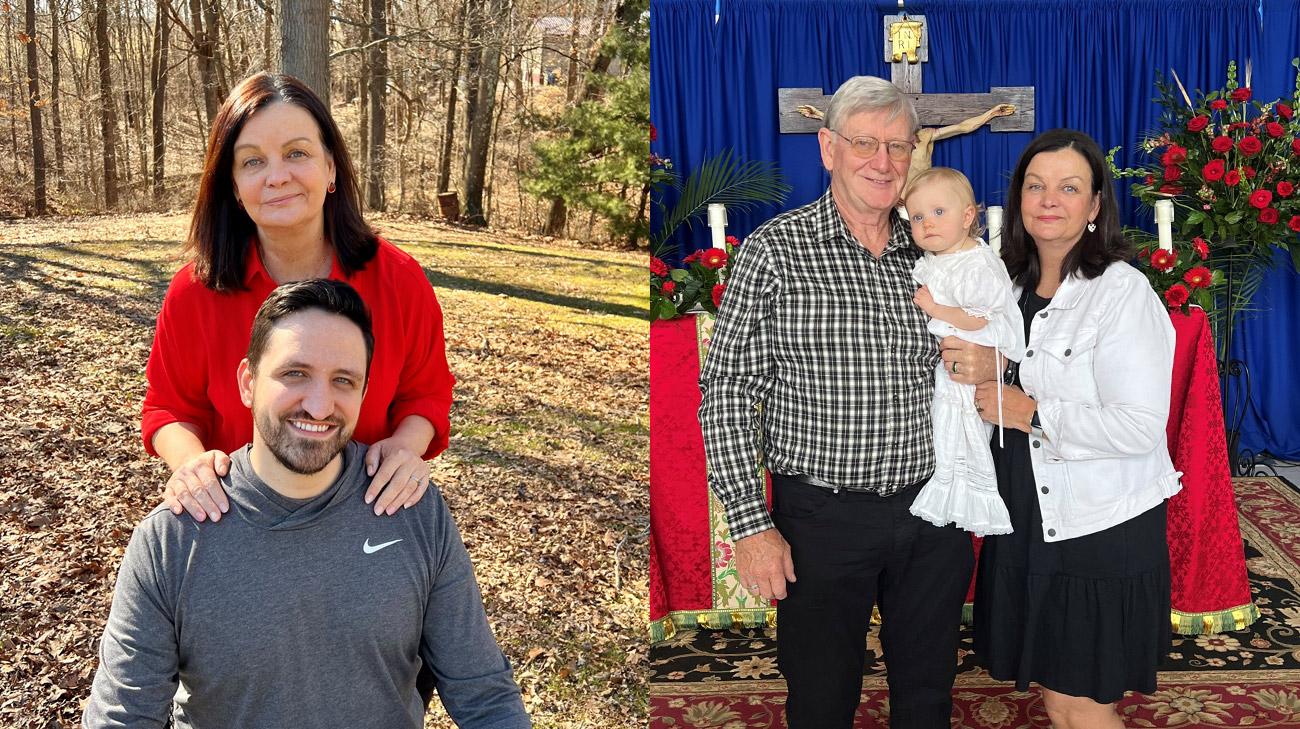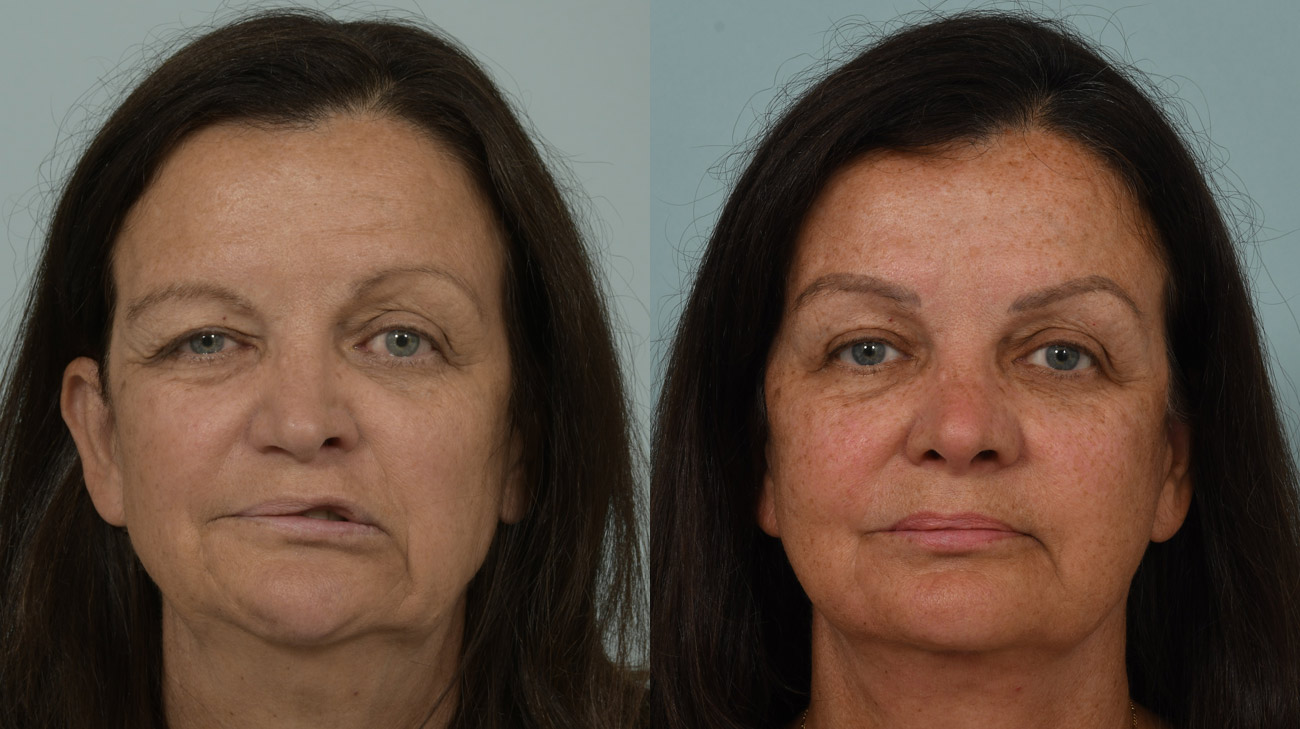
A mother of five children and a high school chemistry and physics teacher for 34 years, Tami Fitzgerald told all of her kids — biological and those she taught — “never let anything hold you back.” This would become an important mantra for her years later.
Tami, a 63-year-old from Zanesville, Ohio, caught COVID-19 in November 2020 and never seemed to recover from it. In January 2021, a portion of her face became paralyzed. Soon after, her body was in immense pain, she couldn’t sit, she didn’t sleep for days at a time, she couldn’t eat, and she began to hallucinate.
Her son, a physician assistant at Cleveland Clinic, urged Tami to seek treatment at Cleveland Clinic; she spent five days there. Tests revealed that she had Lyme disease, an infection that happens when an infected tick bites a human. Tami had been camping in October 2020. It is believed that this is when she was bit by a tick.
Tami’s Lyme disease caused encephalitis, meningitis and facial palsy. The nerve damage affected the areas from her ear to her eye, forehead, cheek and mouth.
“It was a relief to finally have the right diagnosis,” says Tami.
As the rest of her body healed with the help of antibiotics, her face was still paralyzed. In May 2021, she researched facial palsy and went to a hospital out of state for a consultation. A receptionist asked her why she traveled so far for care when Cleveland Clinic was much closer.
In August of 2021, Tami made an appointment to see facial plastic and reconstructive surgeon Patrick Byrne, MD, Chief of the Integrated Surgical Institute and Chair of Otolaryngology - Head and Neck Surgery at Cleveland Clinic — the surgeon the receptionist recommended.
Tami saw Dr. Byrne at Cleveland Clinic's Center for Facial Reconstruction and Facial Nerve Disorders. The Center brings together multiple experts from different disciplines to provide leading-edge reconstructive technology and expertise with an unparalleled success rate. This collaboration brings patients the best care — from consultation to surgery to rehabilitation.
Dr. Byrne diagnosed Tami with synkinesis, a discoordinated or unwanted movement of facial muscles that occurs following partial recovery of the facial nerve due to inappropriate regeneration of nerve fibers.
“When nerves are completely paralyzed and they regenerate, they often go haywire, causing issues like Tami’s,” explains Dr. Byrne.
After natural nerve progression and physical therapy, Dr. Byrne recommended surgery as the next step.
“I was happy to have surgery,” recalls Tami. “The paralysis caused me to look so unhappy. My face was drooping, I couldn’t close my eye, and my bottom lip didn’t move. I also had trouble breathing and I ate and drank very sloppily.”

Tami before her procedures (left) and after (right).
In May 2022, Tami had her first surgery — nasal reconstruction to open her nasal passageway, enabling her to breathe better.
“The paralysis caused her nasal passage to collapse. I used cartilage from a cadaver and from the back of Tami’s ear to reconstruct the passage so she could breathe easier,” explains Dr. Byrne.
In December 2022, Tami had a selective neuromyectomy. This low-risk surgery with minimal downtime targets and removes certain branches of the facial nerve to get rid of unwanted facial movements. During the six-hour surgery, Dr. Byrne also did a facelift on the other side of her face so both sides would match up better.
“Tami is such a special person, who does a lot of face-to-face communication for a living. With the paralysis, a lot of the key facial mechanisms were lost. These procedures tend to work well together. They gave her control of her facial expressions and aesthetics to match her personality,” says Dr. Byrne.
Through surgery, Tami regained most of the use of her bottom lip so that she can eat and drink easier and doesn't have to hold her lip out to brush her teeth. In addition, she can open and close her eye, she regained proper speech, and she has more of a smile so that she doesn't look sad all the time.
Now, Tami sees Dr. Byrne every three months for Botox injections to relax her muscles. This allows her mouth and eye to open and relieves tension in her neck.
“Before I had my surgery, I was ashamed of how I looked,” recalls Tami. “I always told my kids to never let anything hold them back and I didn’t want the way I looked to hold me back. But because of Dr. Byrne’s compassion, understanding and ability to see things from my viewpoint, I now feel confident in the way I look.”
Related Institutes: Head & Neck Institute

